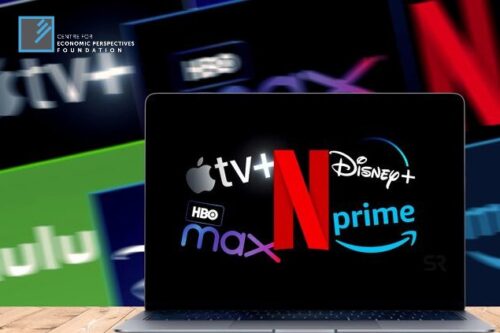Last year I wrote about the so-called “Streaming Wars”. This term is used to describe the process of the rising number of streaming video on demand (VOD) services from all sorts of corporations trying to position themselves in an ever-growing and yet such a tight market.
The world is a different place now compared to a year ago: Eastern Europe has been engulfed in a military conflict for almost half a year now, there are fears of an escalation along the Taiwan strait, double-digit inflation is within touching distance all over the world. It would be a surprise to see the VOD landscape unchanged.
One could argue there have been significant changes in the market, but if you look at the companies mentioned in last year’s article, it seems like the main protagonists have not changed at all. Yet a more granular view would show how much every player in the market has evolved. It is best to start with the main disruptor, the company whose name has become synonymous to streaming. Netflix is simply unrecognizable. First of all, the company has lost half its value in the last year, while compared to the all-time high it set last November it is only worth a third of what it used to be, and these numbers are much better now compared to a few weeks ago. The biggest reason for such a wild swing, apart from the global turmoil, is one metric: subscriber growth. The stock went off a cliff when Netflix announced they had lost subscribers for the first time during the first quarter of 2022, but such is the nature of the stock market, that the announcement of losing a million more in Q2 was greeted with big relief, because the market expected the number to be double that, so the stock rallied. Apart from the statistics, Netflix is also revamping its business model, but more on that later.
Netflix’s competition is hard to define. Companies of a different weight class, such as Amazon and Apple, are also in the VOD market with their Prime Video and TV+ offerings. The two are worth more than $4 tln combined. Then there are the traditional media companies trying to adapt to the realities of the 21st century. Disney seems to be doing better than most, with subscriber growth still going strong despite all the hurdles. In fact, the pandemic helped boost Disney’s subscriber base at an unprecedented and unexpected rate. Launched in late 2019, the service got to its 5-year goal in roughly a year. Disney does probably possess the most valuable library of offerings, and yet for all of Disney’s and Netflix’s prowess, the summer’s most anticipated premieres are taking place elsewhere. Amazon’s acquisition of rights to The Lord of The Rings last year is bearing its first fruit. The high-budget prequel TV-show is going head-to-head with HBO’s own fantasy high-budget prequel TV-show of the Game of Thrones, probably the single most popular TV-show of all time.
The sector as a whole is being pressured from the outside environment. Inflation bites into the wallets of everyone nowadays, so any discretionary spending is being reviewed by households all over the world. As a result, subscription growth is not a priority right now. Subscription growth has also lost its significance for investors as the free-money dries up and company fundamentals start to take precedence. Growth at all costs is unsustainable, so Netflix is keen on doing something they said they would never do: offering an ad-based version. In fact, the company has teamed-up with Microsoft, a company that is actually in the same weight class as Apple or Amazon, in order to make a lower-priced ad-based alternative to the current version of the service. Competition is tough, so lower-priced alternatives might eventually prevail.
In that context a completely free alternative seems to be out of the picture, mainly because it is not exactly a VOD service, and yet it has more content than all the streaming services combined. YouTube (owned by Google) is the place to watch something, anything really, apart from actual full-length movies or tv-shows. But seeing as a lot of content that used to go on cable TV has ended up completely free on YouTube, or is doing both, one might wonder whether at some point all content is going to be free of charge, with the only price to pay being the few seconds here and there to watch a commercial. YouTube’s edge stems from its ability to crowdsource content, something streaming services can only dream about while they spend tens of billions a year on their content. If we zoom out a little bit more, we might consider social media, namely Instagram and TikTok in the competition as well.
Essentially, the streaming wars were never about who spends more or who gets the rights to which movies or tv-shows. Those were all means to an end, and that end is the time: the time people spend on their platform, consuming their content. There are roughly 120 bln hours of open eyes every day, 16 for every human being on earth, and the largest corporations on earth are fighting to get as much of it as they can. A VOD service is just one way to do that. The commodity of the 21st century is time.

